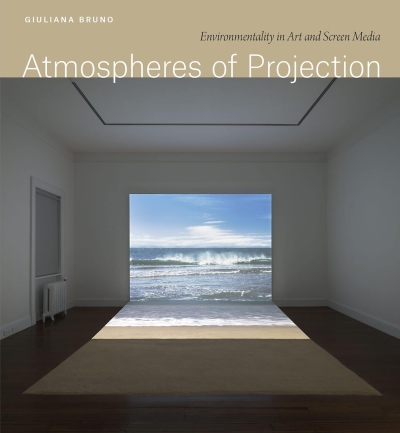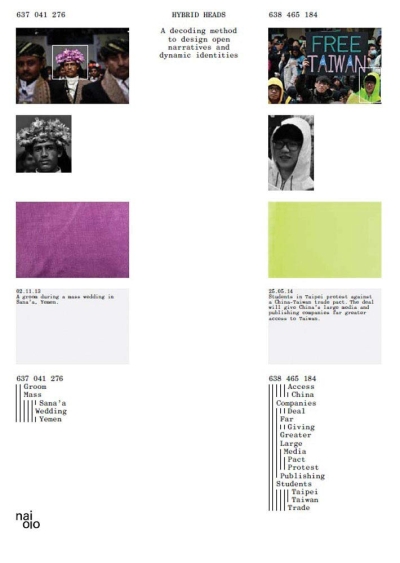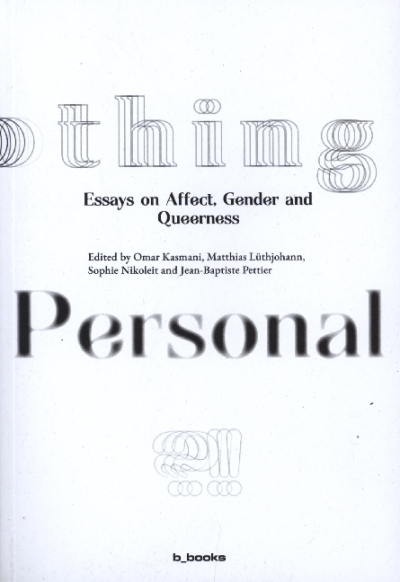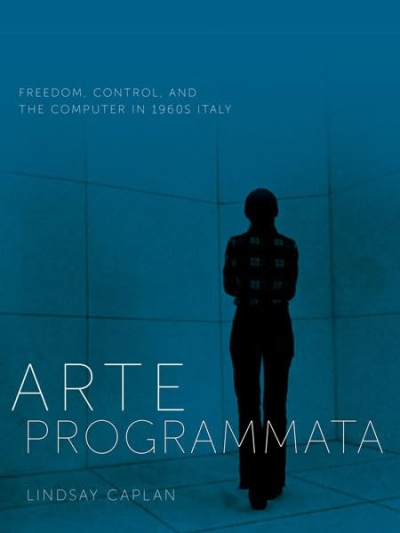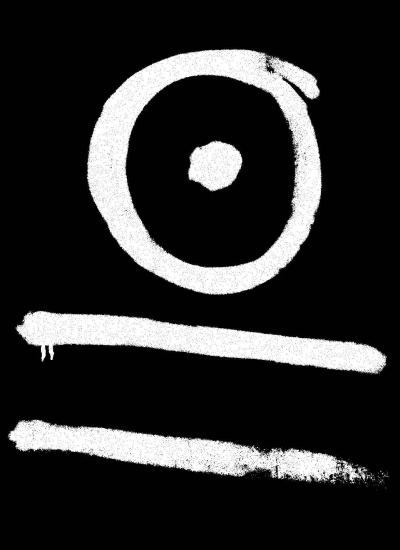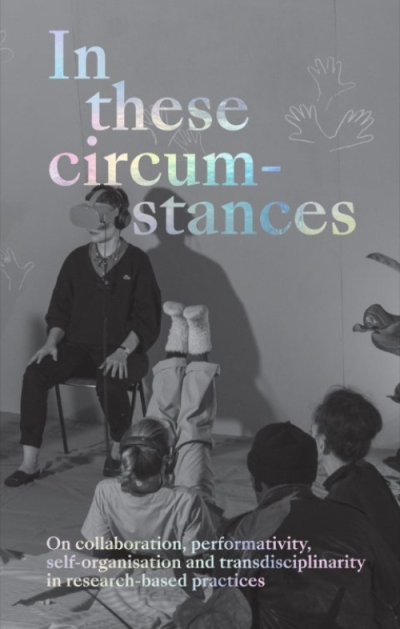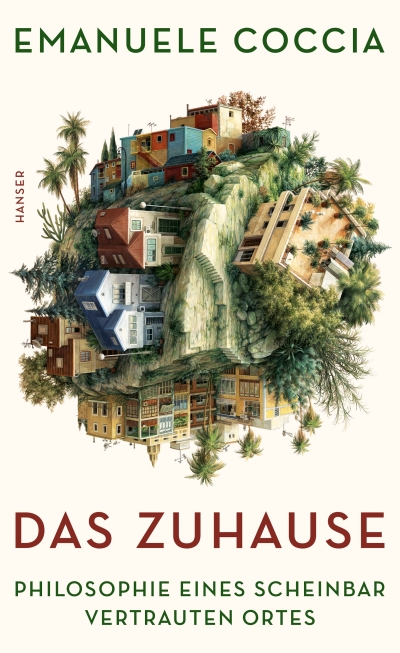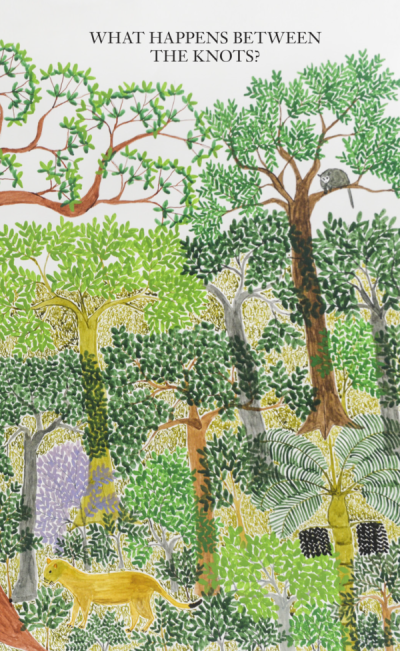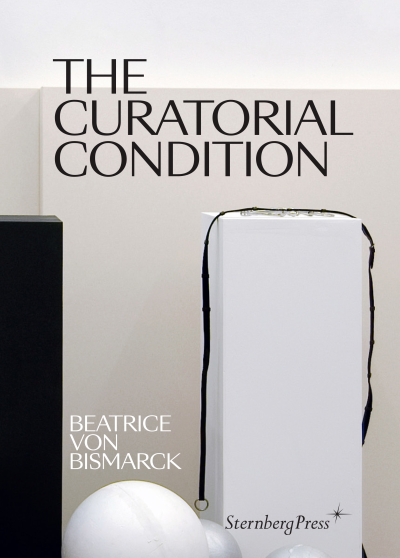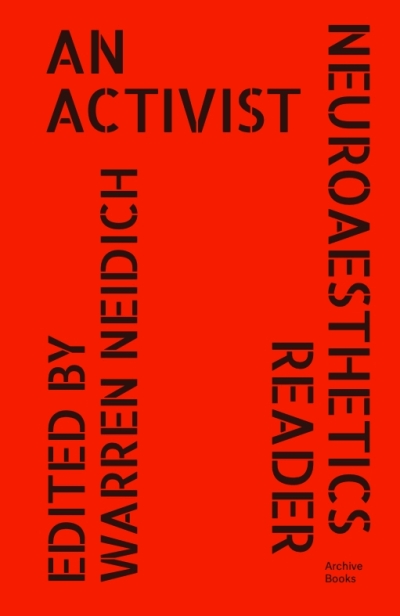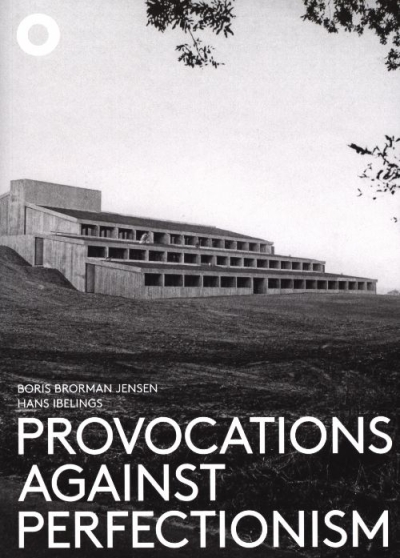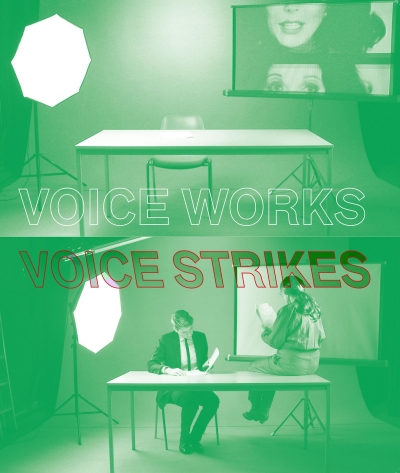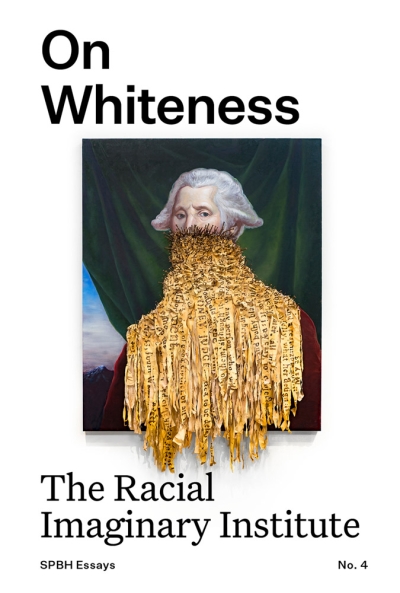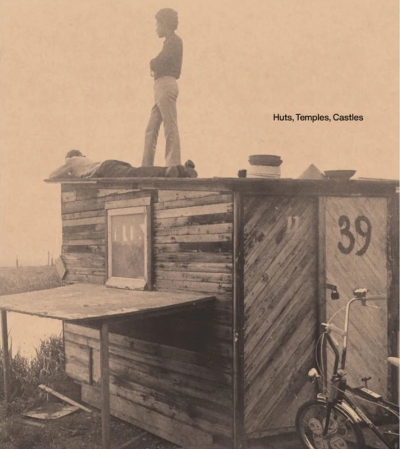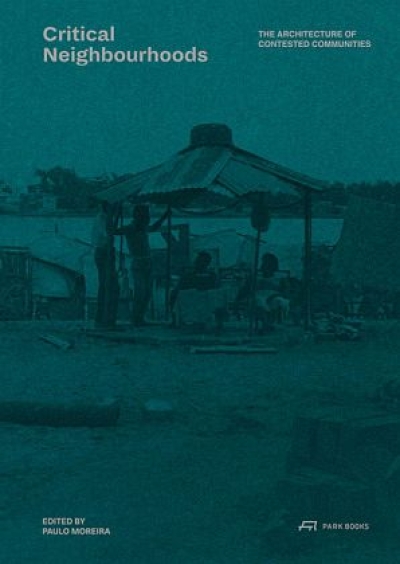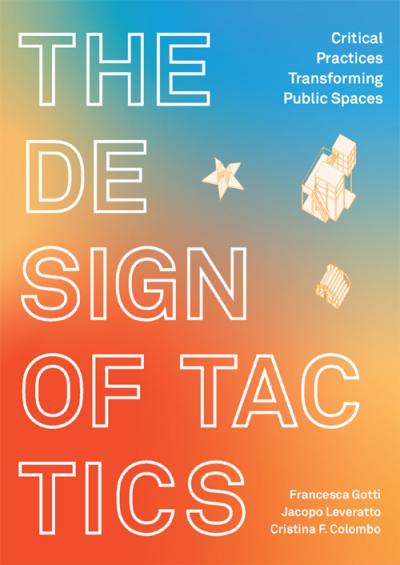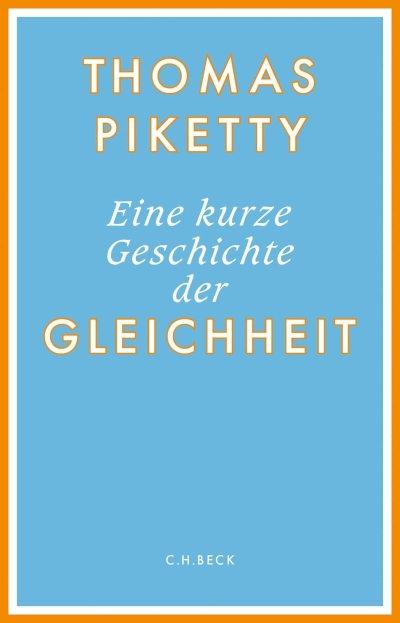gerade nicht auf Lager
Donika Luzhnica & Jonas König (ed.)
Prishtina in 53 Buildings
Elena Biserna (Ed)
Walking from Scores
gerade nicht auf Lager
Tsvetelina Hristova, Brett Neilson and…
Data Farms. Circuits, Labour, Territory
Lenka Veselá (Ed.)
Synthetic Becoming
gerade nicht auf Lager
Stavros Stavrides, Penny Travlou (Eds)
Housing as Commons. Housing Alternatives as Response to the…
Christiane Rösinger
Was jetzt kommt. Christiane Rösinger. Ausgewählte Songtexte
gerade nicht auf Lager
Pier Vittorio Aureli, Martino Tattara
Dogma. Living and Working
gerade nicht auf Lager
Baburov, Djumenton, Gutnov, Kharitonova…
The Ideal Communist City
gerade nicht auf Lager
Briana J. Smith
Free Berlin. Art, Urban Politics, and Everyday Life
Hg. Oliver Clemens, Jesko Fezer, Kim…
An Architektur Archive
gerade nicht auf Lager
Christian Dehli, Andrea Grolimund
Kazuo Shinohara: The Umbrella House Project
DeForrest Brown, Jr.
Assembling a Black Counter Culture
George Papam, Phevos Kallitsis, David…
The Beach Machine. Making and Operating the Mediterranean…
gerade nicht auf Lager
Yuma Shinohara, Andreas Ruby (Hg.)
Make Do With Now: New directions in Japanese Architecture
Zara Pfeifer
ICC Berlin. Zara Pfeifer
Florian Heilmeyer, Sandra Hofmeister (…
Berlin. Urbane Architektur und Alltag seit 2009
CuratorLab (Ed.)
Assuming Asymmetries. Conversations on Curating Public Art…
gerade nicht auf Lager
Michael Rawson
The Nature of Tomorrow. A History of the Environmental…
gerade nicht auf Lager
Hiuwai Chu, Meagan Down, Nkule Mabaso,…
CLIMATE. Our Right to Breathe
Patricia Ribault
Design, Gestaltung, Formatività
gerade nicht auf Lager
Stuart Hyatt, Janneane Blevins &…
Stations. Listening to the Deep Earth
gerade nicht auf Lager
Anne Davidian, Laurent Jeanpierre (Eds.)
What Makes an Assembly? Stories, Experiments, and Inquiries
Ingo Offermanns (Ed.) Dokho Shin &…
Graphic Design Is (...) Not Innocent: Scrutinizing Visual…
gerade nicht auf Lager
Silke Langenberg (Hg.)
Upgrade: Making Things Better
Christiane Sauer, Mareike Stoll, Ebba…
Architectures of Weaving
Wilfried Wang (Hg.)
On the Duty and Power of Architectural Criticism
gerade nicht auf Lager
Christian Sander
Claude Parent, Paul Virilio - Architecture Principe. Formen…
Marie-France Rafael
Passing Images. Art in the Post-Digital Age
Giuliana Bruno
Atmospheres of Projection. Environmentality in Art and…
gerade nicht auf Lager
Mohsen Mostafavi (ed)
Manfredo Tafuri. Modern Architecture in Japan
gerade nicht auf Lager
Material Cultures
Material Cultures: Material Reform. Building for a Post-…
Daniela Dossi
Hybrid Heads
gerade nicht auf Lager
Leonhard Laupichler & Sophia…
New Aesthetic 3. A Collection of Experimental and…
gerade nicht auf Lager
Sven Lütticken
Art and Autonomy. A Critical Reader
gerade nicht auf Lager
Christian Brox (Brox+1)
BERLIN POSSIBILITY. Rave in Ruinen. Clubkultur 1990 bis…
Florian Strob (Hg.)
Architect of Letters. Reading Hilberseimer
Wolfgang Thöner, Florian Strob, Andreas…
Linke Waffe Kunst. Die Kommunistische Studentenfraktion am…
Florian Idenburg, LeeAnn Suen,…
The Office of Good Intentions. Human(s) Work
Peter Kiefer, Michael Zwenzner (Hg.)
Exhibiting SoundArt
Jesko Fezer
Umstrittene Methoden. Architekturdiskurse der…
Angelika Juppien, Richard Zemp,…
Atlas des Dazwischenwohnens. Wohnbedürfnisse jenseits der…
Joerg Franzbecker, Naomi Hennig,…
X Properties. Berliner Hefte zu Geschichte und Gegenwart…
gerade nicht auf Lager
Lauren Berlant
On the Inconvenience of Other People
Stefano Harney, Fred Moten
Allseits unvollkommen. Plantokratie und schwarzes Studium
Lucius Burckhardt
Gerade noch gutgegangen. Fünf Jahrzehnte Planungskritik
Vittoria Pavesi (Hg)
The Missing Planet. Visions and Re-Visions of Soviet Times
Gottfried Schnödl, Florian Sprenger
Uexkülls Umgebungen. Umweltlehre und rechtes Denken
Gottfried Schnödl, Florian Sprenger
Uexküll's Surroundings. Umwelt Theory and Right-Wing…
Charles L. Davis II
Building Character.The Racial Politics of Modern…
gerade nicht auf Lager
Teddy Cruz, Fonna Forman
Spatializing Justice. Building Blocks
gerade nicht auf Lager
Jacopo Galimberti
Images of Class. Operaismo, Autonomia and the Visual Arts (…
gerade nicht auf Lager
Frida Grahn (Hg.)
Denise Scott Brown. In Other Eyes. Portraits of an Architect
Michael Franz, Fabian Ginsberg (Hg.)
Strategien der Aufstandsbekämpfung. Kunst
David Sim
Sanfte Stadt. Planungsideen für den urbanen Alltag
gerade nicht auf Lager
Hannah Black
Tuesday or September or the End
gerade nicht auf Lager
Adrienne Buller, Mathew Lawrence
Owning the Future. Power and Property in the Age of Crisis
gerade nicht auf Lager
Sianne Ngai
Das Niedliche und der Gimmick. Zwei ästhetische Kategorien
dérive
dérive N° 89, Polyzentral und Ökosozial (Okt-Dez/2022)
gerade nicht auf Lager
Mathias Denecke, Holger Kuhn, Milan…
Liquidity, Flows, Circulation. The Cultural Logic of…
gerade nicht auf Lager
Bernard Fibicher (Hg)
Resistance Anew: Artworks, Culture, & Democracy (…
gerade nicht auf Lager
Reto Geiser, Michael Kubo (Hg)
Futures of the Architectural Exhibition.
gerade nicht auf Lager
Benjamin Bratton
Die Realität schlägt zurück. Politik für eine…
gerade nicht auf Lager
Rolf Lindner
In einer Welt von Fremden. Eine Anthropolgie der Stadt
Lorenzo Fabian & Ludovico Centis
The lake of Venice. A scenario for Venice and its lagoon
gerade nicht auf Lager
Peter Osborne
Crisis as Form
gerade nicht auf Lager
Leslie Kern
Gentrification Is Inevitable and Other Lies
Arch+ Zeitschrift für Architektur und…
Arch+ 249. Learning Spaces
gerade nicht auf Lager
Ergül Cengiz, Burcu Dogramaci, Philipp…
Exzentrische 80er: Tabea Blumenschein, Hilka Nordhausen,…
Omar Kasmani, Matthias Lüthjohann,…
Nothing Personal?! Essays on Affect, Gender and Queerness
Sinthujan Varatharajah, Hilal Moshtari
Englisch in Berlin. English in Berlin
Ina Blom
Houses to Die In. And Other Essays on Art
Lindsay Caplan
Arte Programmata. Freedom, Control, and the Computer in…
gerade nicht auf Lager
Erik Spiekermann
Stop Stealing Sheep & Find out how type works. 4th…
Luka Holmegaard
Look
IDEA Magazine
IDEA 399. In the Design Field, Today: Thought and Practice…
Verena von Beckerath, Barbara Schönig (…
Drei Zimmer, Küche, Diele, Bad. Eine Wohnung mit Optionen
gerade nicht auf Lager
Tresor
Tresor: True Stories: The Early Years
Alexis Hyman Wolff, Achim Lengerer,…
Berliner Hefte zu Geschichte und Gegenwart der Stadt #9. Am…
gerade nicht auf Lager
Philippine Hoegen (Ed.)
In these circumstances. On collaboration, perfomativity,…
Emanuele Coccia
Das Zuhause. Philosophie eines scheinbar vertrauten Ortes
gerade nicht auf Lager
Jeanne Gerrity, Anthony Huberman (Eds.)
What happens between the knots? A Series of Open Questions…
Beatrice von Bismarck
The Curatorial Condition
gerade nicht auf Lager
Dimitra Kondylatou, Milica Ivic, David…
Architectures of Healing. Cure through Sleep, Touch, and…
gerade nicht auf Lager
Warren Neidich (Ed)
An Activist Neuroaesthetics Reader
gestalten, ArchDaily, Rosie Flanagan,…
The ArchDaily Guide to Good Architecture. The Now and How…
gerade nicht auf Lager
B. B. Jensen, H. Ibelings (eds.)
Provocations Against Perfectionism: The Architecture of…
gerade nicht auf Lager
Jack Clarke & Sami Hammana (Hg)
The Geofinancial Lexicon
Kerstin Honeit, Fiona McGovern (Hg.)
Kerstin Honeit. Voice Works Voice Strikes
gerade nicht auf Lager
Claudia Rankine
On Whiteness. The Racial Imaginary Institute
Deutsche Wohnen & Co enteignen (Hg)
Wie Vergesellschaftung gelingt. Zum Stand der Debatte
gerade nicht auf Lager
Beatriz Colomina, Ignacio G. Galán,…
Radical Pedagogies
gerade nicht auf Lager
Anouchka Grose, Robert Brewer Young
Uneasy Listening. Notes on Hearing & Being Heard
gerade nicht auf Lager
Ursula Schulz-Dornburg
Huts, Temples, Castles
Paulo Moreira (Ed.)
Critical Neighbourhoods. The Architecture of Contested…
gerade nicht auf Lager
Muñoz Sanz, V., Thomidou, A., eds.
Roadside Picnics: Encounters with the Uncanny
gerade nicht auf Lager
Francesca Gotti, Jacopo Leveratto,…
The Design of Tactics. Critical Practices Transforming…
gerade nicht auf Lager
Thomas Piketty
Eine kurze Geschichte der Gleichheit
gerade nicht auf Lager
Mary Pepchinski, Christina Budde (eds.)
Women Architects and Politics. Intersections between Gender…





























